Warships. Cruisers. "Perefurutaki" in metal
In fact, we continue the conversation that was raised in the topic about Furutaki, because our two heroes today, Aoba and Kinugasa, are nothing more than the Furutaka project, but with some alterations.
Here you need to know the Asian trick. History These cruisers were born precisely under the cover of cunning. In general, the Aoba and Kinugasa were to be built as the third and fourth ships of the Furutaka series, but by that time the Japanese admirals had already wanted to make numerous design changes.
The chief designer of the cruisers Hiragi was very opposed, because he knew how the attempts to realize all the Wishlist command ended. Therefore, admirals from the main naval headquarters took and sent Rear Admiral Hiragi to Europe. So to speak, on "advanced training". And as soon as he left for a business trip, to his deputy, captain of the second rank Fujimoto, a delegation of staffs appeared and dumped a whole heap of desires in front of the cautorang.
It is clear that the captain of the second rank is not Rear Admiral. Fujimoto was more accommodating, because it can be said that the intrigue ended successfully. And in the end, two cruisers were born, which could be called anything you like, but not the Furutaka. It really was other ships. So I had to bring them to a separate class, which the Japanese naval command did. And only then began the pulling up of “Furutak” to the level of “Aoba”, as mentioned in the previous article.
Fujimoto did not want to spoil his career and went to meet the "requests" of admirals from the naval general staff. As a result, the cruiser began to weigh almost 10 tons (the Furutaka started as a 000), and the expected total displacement went beyond 10 thousand tons.
Increased displacement entailed a change in stability, cruising range and speed.
In addition, it was on Aoba-type cruisers that the transition to new, two-gun towers of the main caliber took place.
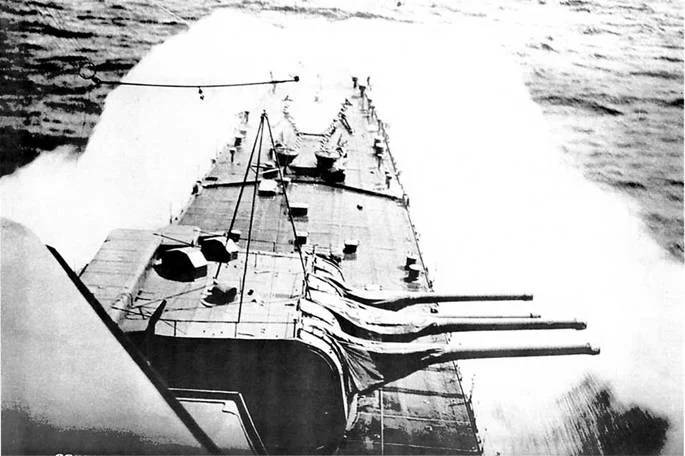
Instead of 80-mm anti-aircraft guns, universal 120-mm guns were installed. But most importantly - these were the first cruisers on which catapults were installed to launch aircraft.
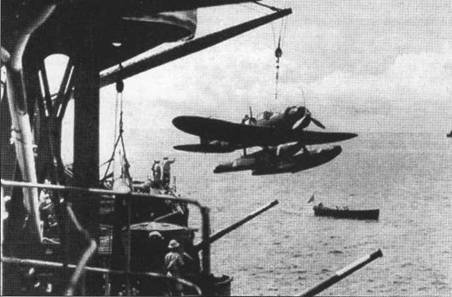
After the entry into operation of both cruisers, the Japanese had to upgrade the Furutaki in order to pull them up to the Aoba level. It was generally assumed that four cruisers of the same type with approximately the same characteristics would serve in the same compound.
If you study the performance characteristics of the ships, it becomes completely clear that this is not quite “Furutaki”. More precisely, not the Furutaki at all.
Displacement: 8 738 t (standard), 11 660 (full).
Length: 183,48 m (waterline).
Width: 17,56 m
Draft 5,66 m.
Reservations.
Armor belt - 76 mm.
Deck: 32-35 mm.
Towers: 25 mm.
Bridge: 35 mm.
Barbets: 57 mm.
Both Aoba-class cruisers were converted from coal-fueled boilers to oil-fired boilers, just like their predecessors. Power plants (4 Kawasaki-Curtiss TZA) received energy from 10 Kampon Ro Go oil boilers, which allowed to increase the power plant capacity to 110 hp. The maximum speed was 000 knots. The practical range is 34 miles with an economical 8 knots.
The crew consisted of 657 people.
Armament.
The main caliber artillery consisted of six 203 mm / 50 Type 2 guns in three towers.
Anti-aircraft weapons were initially more than modest.
4 120 mm guns and two 7,7 mm machine guns.
As modernizations progressed over the course of the war, the Japanese squeezed anti-aircraft mounts wherever they could, in which they were masters. And by the end of the war, anti-aircraft weapons of the cruiser type "Aoba" consisted of:
4 universal guns 120 mm.
44 anti-aircraft guns 25 mm (3x3, 10x2, 15x1).
It is worth noting that at first glance the Aoba looked like such a floating air defense battery, the value of 44 barrels was more than doubtful, since the most important component of the ship’s protection was missing: a unified fire control system for anti-aircraft guns. Actually, the end of the battle path of the cruisers Aoba and Kunigas is the best confirmation of this.
Torpedo armament initially consisted of 6 two-tube fixed 610-mm torpedo tubes. Generally, initially torpedoes were not provided for on cruisers, this is just from the list of “hoteloks” of the naval general staff. And after modernization, instead of slotted fixed torpedo tubes, 2 rotatable four-tube TAs with shield protection were installed. Installed TA on the sides of the catapult. Ammunition consisted of 16 "Long Lance".
Aviation group - two seaplanes and one catapult.
Radar weapons. Cruisers of the Aoba type were among those who received radar weapons earlier than others. In 1943, cruisers received Type 21 radars, in 1944 they were replaced by Type 22 No. 4 radars.
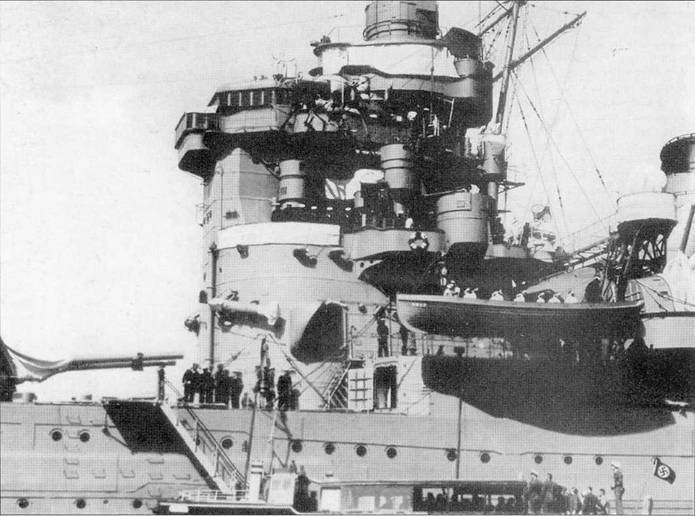
Combat service.
The service of the cruisers was, let's say, full and very eventful. It was long for one ship, not very long for the second.
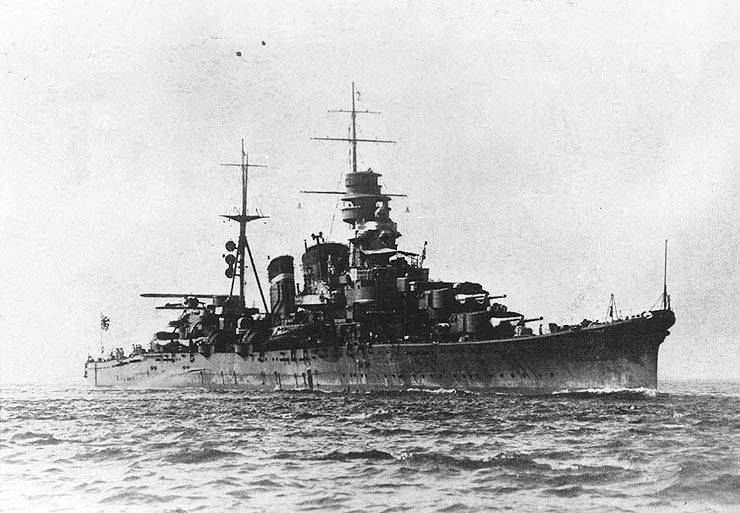
Both cruisers were part of the 6th division of heavy cruisers. After the outbreak of hostilities, they were engaged in covering up various landing operations of the Japanese fleetaimed at the capture of foreign territories in the Pacific Ocean.
With the participation of cruisers of the 6th division, landings were landed in Rabaul and Kavieng, on the east coast of New Guinea (in Lae and Salamua), the islands of Bougainville, Shortland and Manus.
The next operation for the cruisers was the operation to capture Port Moresby. All this led to the battle in the Coral Sea, resulting in an unpleasant disgrace for the Japanese fleet.
The formation of Japanese ships was attacked by American aircraft from aircraft carriers Lexington and Yorktown. The Japanese cruisers were not able to provide at least some resistance, having shot down only 3 aircraft out of almost a hundred participating in the raid. That is, the cruisers turned out to be spectators at a play in which American pilots drowned the Shokho aircraft carrier. And in the end they drowned.
The Japanese did not capture Port Moresby, and the Aoba went to Japan for planned repairs and re-equipment in terms of air defense.
The battle at Savo Island was perhaps the most successful in Aoba’s career. Returning to the division after repair, the cruiser immediately went into battle. Yes, in what!
On the night of August 9, the formation of Admiral Mikawa, which included the 6th division, attacked the Allied fleet located north of the Gudalkanal.
The cruiser’s seaplane crews had a great reconnaissance of the area, not only giving a picture of the number of American ships (6 heavy and 2 light cruisers and 15 destroyers), they timely discovered the separation of enemy forces.
At night, Japanese cruisers, lining up in a wake column, sequentially attacked two groups of allied ships.
During the battle, Aoba fired 182 203 mm shells and 13 torpedoes at the enemy. It is impossible to determine exactly which ships were hit by his shells and torpedoes, but judging by the nature of the battle, hits were in all of the enemy’s ships. The Japanese cruiser did not suffer losses, with the exception of the crew of the reconnaissance aircraft, which did not return from the next mission.
In response, only one 203-mm shell flew from the American cruisers, causing a fire on the deck just in the area of the torpedo tubes. The cruiser’s crew was lucky that the vehicles were empty. And so the “Long Lances” did not forgive such liberties.
On the night of October 11, 1942, the Aoba took part in the battle at Cape Esperance, during which the attack group of Japanese cruisers was unexpectedly attacked by the formation of the American fleet (2 heavy cruisers, 2 light cruisers and 5 destroyers).
The Japanese did not expect Americans at all, so the latter took full advantage of this. Plus, the numerous mistakes of the Japanese command led to the fact that the Americans won the battle by sinking the cruiser and three destroyers against one of their destroyers.
"Aoba" received more than 40 hits of shells with a caliber of 203 mm and 152 mm. The main-caliber towers No. 2 and No. 3 were disabled, and the third tower completely burned out. It had to be completely changed, so before the repair in 1943, the Aoba walked with two main-caliber towers.
Almost all artillery fire control systems, several anti-aircraft guns and a catapult were destroyed. Other ship superstructures were damaged.
In February 1943, the cruiser returned to the duty station in Kavieng. And after the events of April 3, he was again forced to go for repairs to Japan. American B-25 bombers hit a 227-kg bomb on the starboard side, in the area of the catapult. And what was next? That's right, torpedoes in the vehicles.
It exploded. Twice. Two torpedoes detonated, and the damage from a single bomb turned out to be much more than one could have imagined.
A three-meter hole in the board, a fire in the engine room No. 2, could not immediately cope with the water, even had to land the cruiser aground.
During the repair, seriously considered options for converting the cruiser into a hydro-carrier (at the stern instead of the GK tower equip a deck for 6 seaplanes) or (horror!) Turn the Aoba into a squadron tanker. But the cruiser was lucky, the tower number 3 was completed at the factory, because it was simply installed on the ship and, thank God, there were no cardinal changes. Just installed radar type 21 and some more anti-aircraft guns.
After the repair, the cruiser was engaged in all small things for a long time, and I must say that he did not take part in naval battles. But this did not save, on October 23, 1944, the American submarine SS-243 "Brim" launched 6 torpedoes towards the convoy of Japanese ships. Only one hit. In Aobu. The engine room was flooded (once again), the cruiser lost speed. Nevertheless, they dragged him to Manila, they patched him up and the last heroic campaign to Japan, “Aoba” made a 5-node move.
On the way to the metropolis, the cruiser was repeatedly tried to drown American submariners, but apparently, there was no fate. And “Aoba” came to Kura on December 12, 1944.
It was not possible to quickly repair the ship, but the Americans did not give it slowly. The fact that the submariners could not, was easily arranged by the pilots. During July 1945, they simply turned the cruiser into a pile of metal. The ship, having received almost two dozen hits of 227 kg of bombs, fell apart. The stern broke off, numerous holes in the sides caused the cruiser to sink to the ground. The commander ordered the crew to leave the ship ...
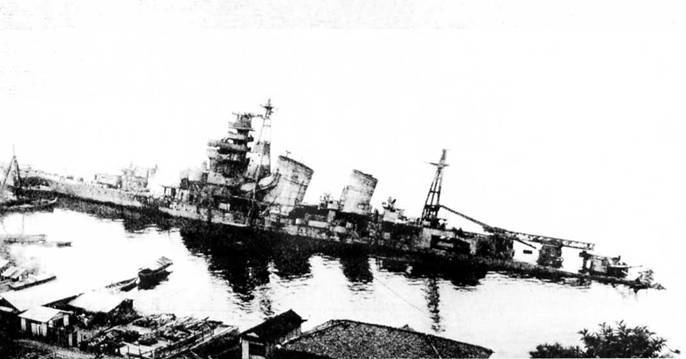
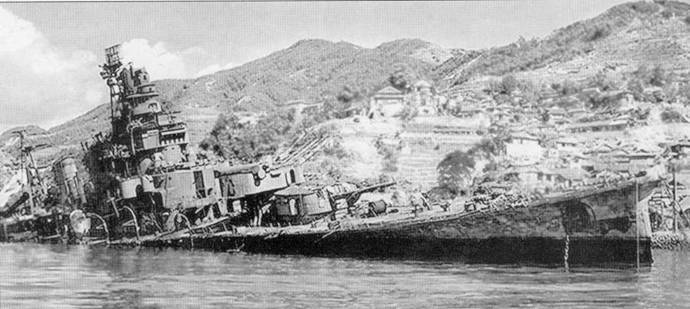
The sibling spike of Aoba, Kinugasa, lived an even shorter life.
The cruiser during 1941 ensured the capture of the islands of Makin, Gilbert, Taraw and Guam. In 1942, he covered Malay convoys, landing operations on Kavieng, Rabaul, Lae, Salamaua, on the Buka, Bougainville, Shortlent and Manus islands.
He participated in an attempt to capture Port Moresby and in the battle near the island of Savo, during which, together with cruisers from the 6th DKR, he took an active part in the sinking of the Australian heavy cruiser HMAS Canberra and the American Astoria.
During the battle, fired 185 pieces of 203 mm shells and 8 torpedoes.
In the battle at Cape Esperance, the Kinugasa received four hits of 152-mm and 203-mm shells, but the crew escaped with a light fright and slightly crumpled superstructures. In response, the Japanese made a dozen hits in the main caliber in the cruiser "Boyce" and "Salt Lake City."
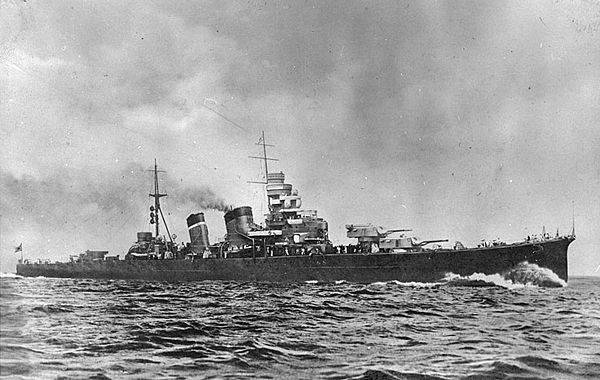
November 13, 1942 the cruiser as part of the formation of Vice Admiral Mikawa last time went to sea to shell the Henderson Field airfield. On the night of November 14, the cruiser arrived at its destination and participated in the shelling, during which the detachment destroyed 18 aircraft, but did not damage the runway.
On the same day, the ship was attacked by American base aircraft. The bomb hit the bow superstructure, pierced all decks and exploded below the waterline. A fire started on the ship, a roll to the port side arose. After 30 minutes, the ship was again attacked by aircraft. Several bombs fell very close to the side of the cruiser, and numerous leaks began. The feed compartments were filled with water, which the crew could not stop and pump.
As a result, the cruiser capsized to the port side and sank, taking 511 sailors with it. 146 crew members managed to escape.
What can be said in the end? One thing can be said: the experiment with the Aobes once again confirmed that the Washington Sea Treaty could only give rise to miscarriages of shipbuilding.
The cruisers turned out to be not quite heavy, rather, like the Exeter, light heavy. Still, 6 x 203 mm - this is not a god news that actually.
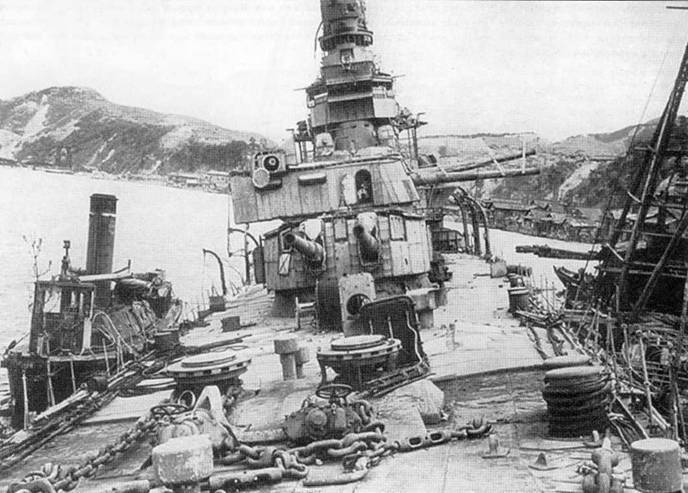
Plus, "Aoba" proved that saving on air defense is not going well. Well, what prevented the installation of a fire control system? Lack of opportunities? Not. There were opportunities. But in fact, 44 trunks, which were controlled by 20 crews, who were in no small part - even in the first half of World War II it was naive to say the least. And in the second ...
But these ships have become a stepping stone to creating true cruising masterpieces. But about them in the next part. Although many are already preparing arguments in order to prove the opposite, I’m sure. Well, let's see. Sometimes truth is born in disputes ... So, at least, they say.
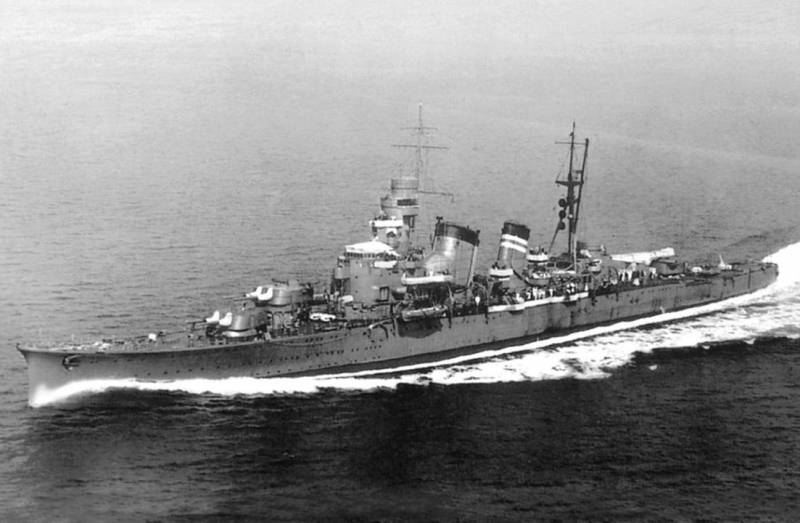
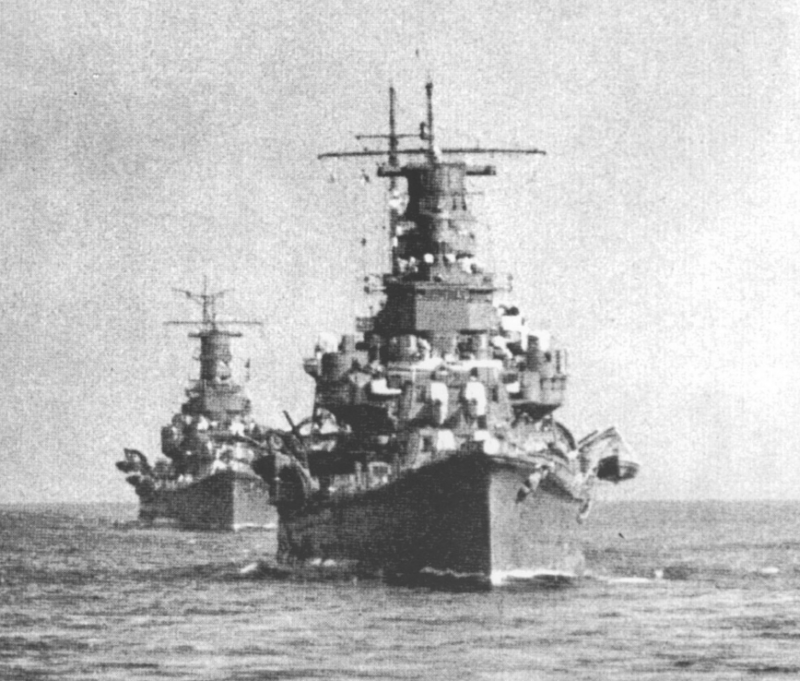
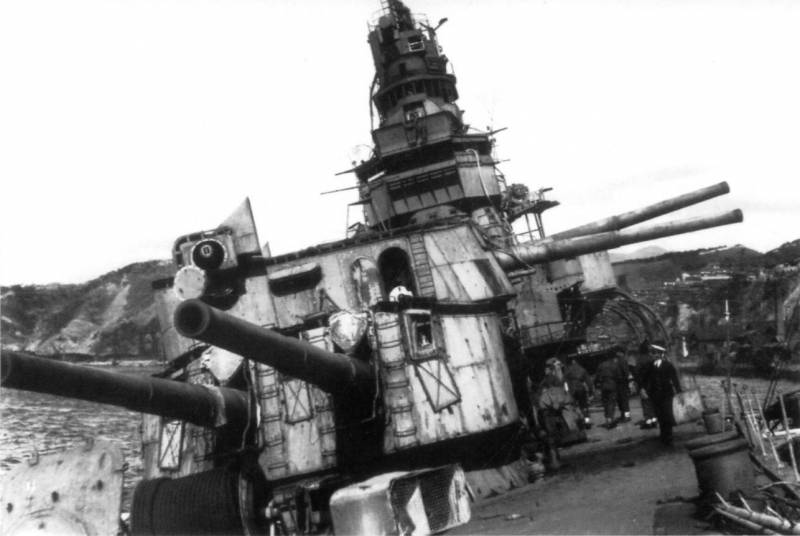
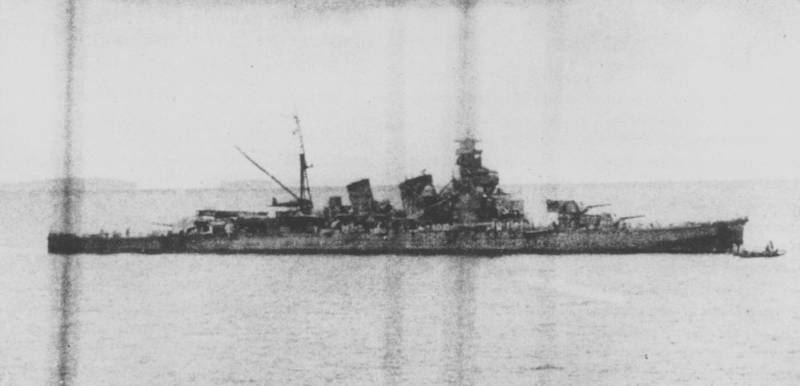
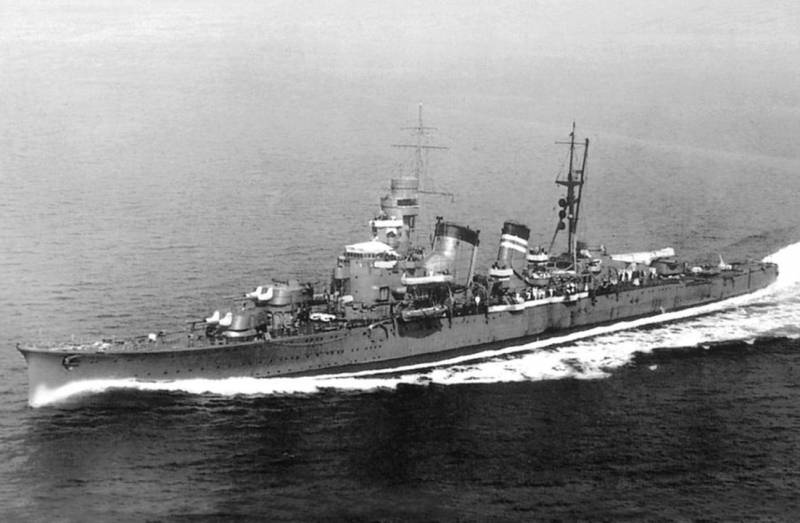
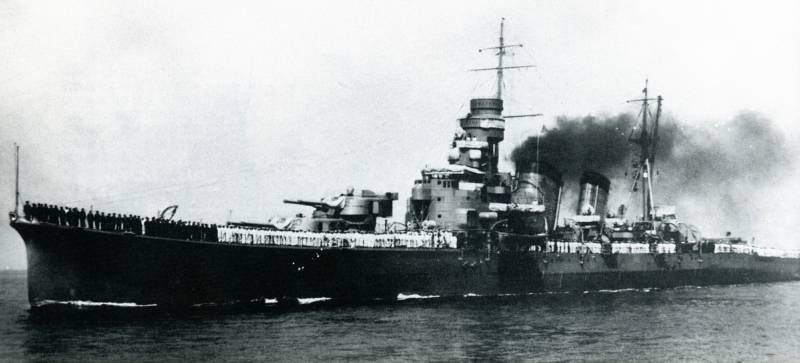
Information